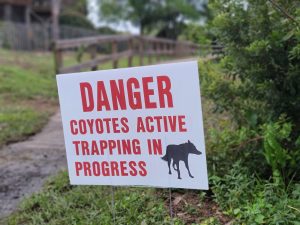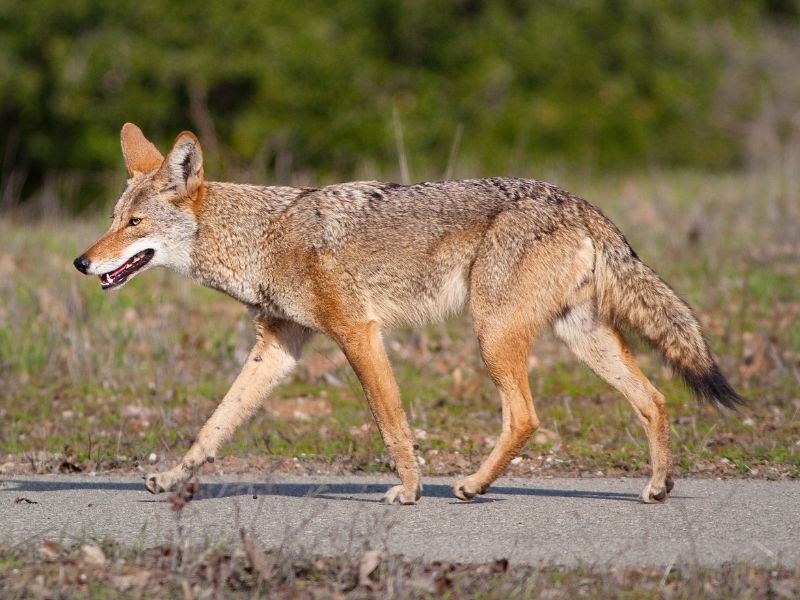It’s been a busy spring and summer for coyote encounters across the Lowcountry. Here’s what you can do to protect your pets.
A coyote charged into the backyard of a James Island family in June, leaving a woman and her dog to fight it off, before her husband came and shot the coyote four times, killing it.

This summer there were numerous reports of coyotes being aggressive with dogs walking on the beach of Sullivan’s Island. In August, one small dog was carried off into the dunes by coyotes and most likely killed. On the Isle of Palms there have been more than 30 sightings of coyotes this year.
Two years ago, a coyote was found hiding in a bathroom inside Cane Bay Elementary school in Summerville.
From Mt. Pleasant to Kiawah, coyotes are literally everywhere. In fact, according to the Post and Courier, South Carolina hunters kill more than 27,000 coyotes in the Palmetto State each year.
Coyotes live in every state except Hawaii.
COEXISTING WITH COYOTES
Many municipalities are finding ways to manage what appears to be a coyote explosion. On Sullivan’s Island, beach paths are marked with signs warning that trapping is taking place. This summer four coyotes were trapped and then euthanized.
But depleting a coyote population isn’t a long-term solution. Officials with the South Carolina Department of Natural Resources (SCDNR) tell us that if you remove all coyotes from a specific area, new coyotes will move in.
Could “hazing” be a more effective solution? According to the Humane Society of the United States (HSUS) hazing and securing food sources are more effective solutions to coyote problems than killing.
Hazing is a method that makes use of deterrents to move an animal out of an area or discourage an undesirable behavior or activity. Hazing can help maintain a coyote’s fear of humans and deter them from backyards and play spaces.

HOW TO HAZE
Using a variety of different hazing tools is important to keep coyotes fearful:
- Yelling and waving your arms while approaching the coyote
- Noisemakers: Voice, whistles, air horns, bells, “shaker” cans full of marbles or pennies, pots, lids or pie pans banged together
- Projectiles: sticks, small rocks, cans, tennis balls or rubber balls (to throw toward the coyote, not at the coyote)
- Other: hoses, water guns with vinegar water, spray bottles with vinegar water, pepper spray or bear repellent
The simplest method of hazing a coyote involves being loud and large. Stand tall and wave your arms and yell. Continue until the coyote runs away.
There are several tools that you can carry with you while walking your dog that can be used to repel coyotes including whistles, air horns, squirt guns and pepper spray.
If at home, squirt the coyote with a garden hose, vinegar water and bang pots and pans together and be sure to store garbage in secure containers and feed pets indoors.
Coyotes can be persistent, and it may take more than one hazing encounter for a coyote to get the message, but eventually most will learn to stay away from humans.





